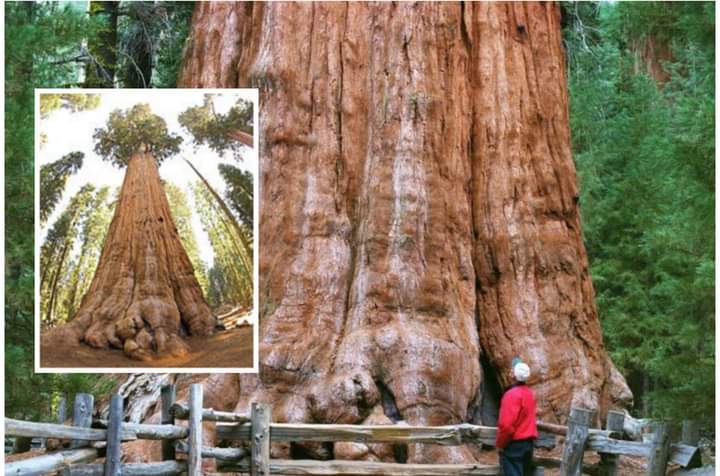GENERAL SHERMAN: The Largest Known Living Single-Stem Tree On Earth

Did you know that the tree named General Sherman is a giant sequoia (Sequoiadendron giganteum) tree located in the Giant Forest of Sequoia National Park in Tulare County, California, USA, and it is the largest known living single-stem tree on Earth estimated to be around 2,300 to 2,700 years old?
While the General Sherman is the largest currently living tree, it is not the largest historically recorded tree. The Lindsey Creek tree, with more than 90,000 cubic feet (2,500 cubic meters) almost twice the volume of General Sherman, was reported felled by a storm in 1905. Another larger coast redwood, the Crannell Creek Giant, a coast redwood (Sequoia sempervirens) cut down in the mid-1940s near Trinidad, California, is estimated to have been 15–25% larger than the General Sherman tree by volume.
The General Sherman was named after the American Civil War general William Tecumseh Sherman. The official story, which may be apocryphal, claims the tree was named in 1879 by naturalist James Wolverton, who had served as a lieutenant in the 9th Indiana Cavalry under Sherman.
Seven years later, in 1886, the land came under the control of the Kaweah Colony, a utopian socialist community whose economy was based on logging. Noting the pivotal role that Sherman had played in the Indian Wars and his forced relocation of native American tribes, they renamed the tree in honor of Karl Marx.[6] However, the community was disbanded in 1892, primarily as a result of the establishment of Sequoia National Park, and the tree reverted to its previous name.
In 1931, following comparisons with the nearby General Grant tree, General Sherman was identified as the largest tree in the world. One result of this process was that wood volume became widely accepted as the standard for establishing and comparing the size of different trees.
In January 2006 the largest branch on the tree (seen most commonly, in older photos, as an "L" or golf-club shape, protruding from about a quarter of the way down the trunk) broke off. There were no witnesses to the incident, and the branch – larger than most tree trunks; diameter over 2 m (6.6 ft) and length over 30 m (98 ft) – smashed part of the perimeter fence and cratered the pavement of the surrounding walkway. The breakage is not believed to be indicative of any abnormalities in the tree's health, and may even be a natural defense mechanism against adverse weather conditions.
In September 2021, the tree was wrapped in aluminum foil to protect it from the KNP complex fires.
Source: wikipedia
#penglobalfactfile


_1755775186.jpg)
